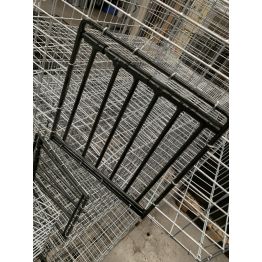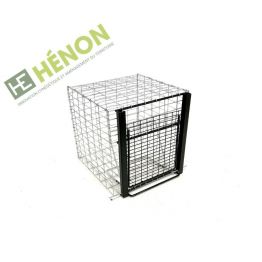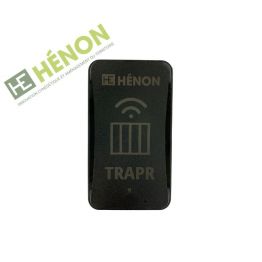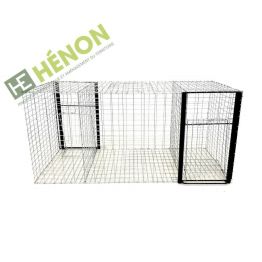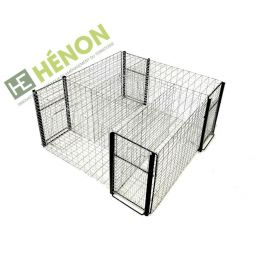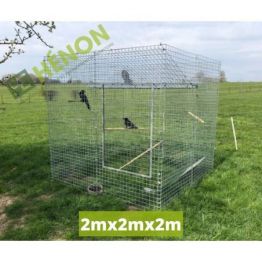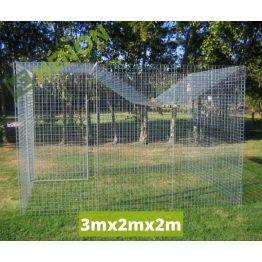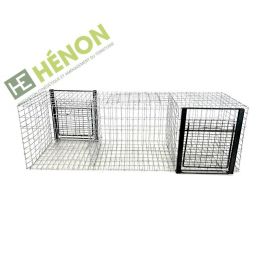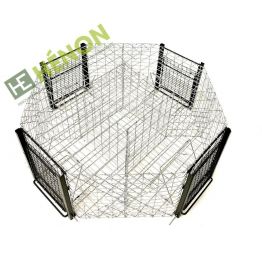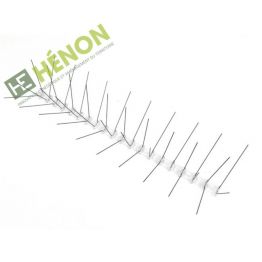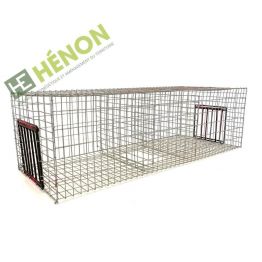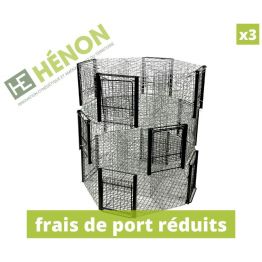03 21 89 59 70
62180 VERTON
Crow & Magpie Traps

-
Compact pigeon / magpie trap
€31.10Compact and robust pigeon / magpie trap.
View Detail View Detail Quick view Quick view -
Connected trap TrapR-SIM (2...
€179.00(1 review)Connected trap TrapR-SIM with a 2 years subscription
View Detail View Detail Quick view Quick view -
copy of Pigeon Trap
€198.70Trap made to catch pigeons
View Detail View Detail Quick view Quick view -
Corbel with fox cage
€890.00Crow trap kit to assemble with fox cag
View Detail View Detail Quick view Quick view -
Crow Trap - 2 entrances
€99.25Cage with crows 2 entrances, i.e. 3 compartments with the caller.
View Detail View Detail Quick view Quick view -
Crow Trap - 4 entrances
€144.70Crow Trap - 4 entrances
View Detail View Detail Quick view Quick view -
Crow Trap 3M x 2M
€649.95Raven used to capture black crows and carrion crows.
View Detail View Detail Quick view Quick view -
Magpie Trap with 2 entries
€64.70Magpie Trap with 2 entries
View Detail View Detail Quick view Quick view -
Magpie Trap with 4 entries
€114.15(2 reviews)Cage with 4 entrances
View Detail View Detail Quick view Quick view -
PIGEON PIC
€7.50sold by the metre - i.e. 2 x 50 cm (40 picks)
View Detail View Detail Quick view Quick view -
Set of 3 magpie traps with...
€316.50Batch of 3 trays with 4 trays 4 starters
View Detail View Detail Quick view Quick view
Crow and magpie traps
The magpie is one of the species likely to cause "ESOD" damage, which when its population increases has a real impact on small fauna. It contributes to the decline of birds (passerines, warblers, goldfinches, etc.) because it is very fond of eggs and chicks. The magpie, which can be recognised by its black and white plumage, belongs to the corvid family.
In this family, the raven (or black crow) is uniformly black. It is omnivorous but prefers meaty food. It is also feared by farmers because it is devastating to crops. At the request of farmers, the prefecture of La Manche authorises the shooting of corvids The word "crow" is commonly used and refers to both the carrion crow and the rook, which are very similar. To differentiate between them, it is good to know that the rook is larger but that the carrion crow is the most common in France.
This is why owning a crow or magpie trap may be unavoidable, especially for farmers who see their harvests decrease.
Crow and raven: what is the difference?
Regulation is essential in the interest of all, despite recurrent criticism. Trapping is highly regulated and the UNAPAF website lists the laws and decrees. It is important to refer to the texts to avoid any dispute.
There are different types of magpie traps and crow traps, with 3 compartments or 5 compartments, square or octagonal, all equally effective in capturing corvids. In each magpie trap, there is a central cage that allows a caller to be placed, because magpies, like crows, when they are in pairs in the spring, do not tolerate the presence of other individuals in their territory. It is thanks to this behaviour that we will easily capture them in this magpie trap.
It is also important to retrieve a magpie from another area so that the magpies see it as an intruder: place the caller in the middle cage provided for this purpose, arm the magpie trap, when the magpies fly over and see the magpie on the ground, they rush to kill it, they try to approach and by circling around the cage, they will end up being caught.
The different types of magpie traps and crow traps
You can find our different products on our website.
The smallest is the compact 2 entry magpie trap, it is light and easily transportable, equipped with 3 compartments, a central one to put the caller and 2 retrieval cages, it can therefore catch 2 magpies. The 2 entry crow trap which is larger will allow you to be versatile as it allows the catching of crows. The larger model allows you to catch up to 4 magpies at a time, and also has a compartment for the caller. The 4 entrance magpie trap is a little more bulky and is octagonal in shape. There is also a higher model that is suitable for both crows and magpies: 4-way crow trap.
Otherwise, there is also the crow cage, available in 3 models. These are large cages of 3 metres by 2 metres that are more suitable for catching crows in the field. Crows also flock to sports fields to feed on grubs just below the surface of the ground, beetles... in a very short time, they can ravage a lawn!






